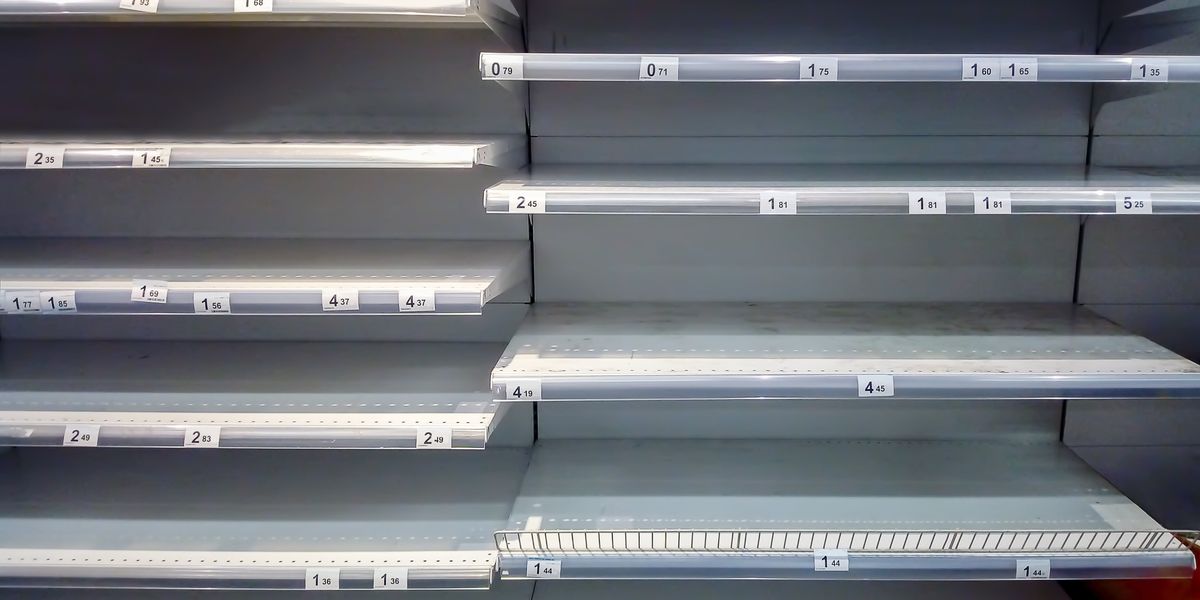How to Eat Well If Your Food Supply Is Limited
Even if the only dancing we’re doing these days is at home, we still need nutritious and balanced meals to give our bodies the fuel they need.
But right now, that can be easier said than done. Many are living with limited access to food, whether your local store has a poor selection or you’re working with a smaller food budget than normal.
We talked to dietitian Kristin Koskinen, who specializes in dance medicine, about how dancers can keep eating healthy—and delicious—meals during this uncertain time.
Be flexible in the grocery store.
Koskinen points out that your food supply can greatly depend on where you live. In some places, stores may be stocked with fresh produce, but have empty freezers and limited perishables; in others, the opposite may be true.
Whatever your situation may be, you can find healthy options—it just may mean letting go of expectations around what your normal grocery haul is, and being flexible about where you’re getting your nutrients.
Fresh, frozen and canned veggies can easily be substituted for one another, says Koskinen. If you’re used to only eating fresh, know that frozen has its benefits, too: It tends to be more affordable, and is actually more nutritious since it’s flash frozen, rather than spending a long time in a fresh state where nutrients can degrade.
Look for other common substitutions. Almost all grains can be substituted for one another, as can most beans. You may not be getting the same nutrition profile, says Koskinen, but that’s okay. Almond, soy, coconut and rice milk can be used in lieu of dairy milk, though be aware that they don’t have the same protein content. Try a new nut or seed butter if there’s no peanut butter. If you can’t find eggs, try ground flax seed. If you can’t get ahold of flour, grind some oats, or try another alternative flour.
Play with new ingredients if your go-tos aren’t available. Koskinen recommends beets, canned pumpkin, canned tuna, any legumes and brazil nuts as nutritious options that may not be in your current rotation.
Only get what you’ll need for a few weeks: Remember, there is no need to hoard.

Get creative in the kitchen.
“Dancers tend to not want to be flexible,” says Koskinen. “But we have to make it work and push the boundaries of recipes. Lean into your creativity.”
Use this time as an opportunity to experiment: Where you once may have been limited by a busy schedule, or focused on making easily-transportable dishes you could eat between class and rehearsal, odds are you now have the time to try out some new recipes.
Just know that you may not be able to follow those recipes to a T. Get inspired on Pinterest, Instagram or food blogs, and then tweak according to what you have available.
Waste not, want not.
If there were ever a time to be sure you’re not wasting any food, it’s now.
Most fresh fruits and veggies can be frozen if you aren’t able to use them before they go bad, says Koskinen. You may have to rethink how you prepare them, though: You won’t be able to resurrect frozen greens into a salad, for example, but you could sauté them or blend them into a smoothie.
Combine veggies that are close to their peak with grains and/or beans for a “kitchen sink” soup. “Some of our favorite recipes come from just using what we have left,” says Koskinen.

Keep a healthy mindset.
Just as important as eating healthy is reducing any stress or anxiety around food, says Koskinen. As long as you are eating a variety of foods, your body is likely getting everything it needs.
Don’t be tempted to change your diet just because you aren’t dancing as much as you are used to. “Your greatest metabolic driver is not class, it’s what you use to stay alive,” says Koskinen. “If you decide to start cutting your calories in an attempt to emerge from quarantine thinner, you’re working against yourself because you’ll lower your greatest energy-burning tool. Your body will respond by saying, I’m not getting enough, I’m gonna slow down.”
It also may be tempting to self-medicate with sugar and alcohol. Consuming those things in moderation is fine, just be sure they aren’t acting as meal replacements, says Koskinen. “Structure your vices,” she recommends, by having them after meals, or by measuring out your drinks, for example.
If you have a history of disordered eating, know that it’s normal to be triggered by this situation. “Reach out to people for help,” says Koskinen. “You don’t have to weather this storm alone.”
No one is expecting you to come out of this healthier than you were before. “The body is resilient,” says Koskinen. “We need to do our best and our best in the current situation is different.”




